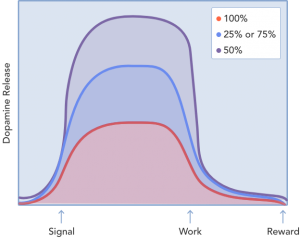Neurochemistry
The word neurochemical comes from neurons which are the electrical subunit of the brain and chemical which refers to specific chemicals in the brain called neurochemicals. Neurons are used for immediate messaging whereas the chemical part is used for messaging which has a longer duration.
Electricity can only move at the speed of light and therefore is limited in its action as a messenger as it can only work instantaneously. An example of this is the knee jerk response a closed loop reflex, input results in instantaneous output. This is useful for immediate danger scenarios and became a prime fitness driver of evolution. However, there comes a point where there is an overload of information some more important than others. Hence the chemical side evolved giving slower responses, through processing in higher cortex areas, which created a more delayed "intelligent" response.
However, as we evolved further, the same problem arose if you were more aware of your surroundings then you could see more lions coming to eat you. But there comes a point where there is an overload of information, so many inputs its difficult to figure out which to act on so awareness evolved, which we are experiencing now as consciousness.
The awareness travels from different aspects of its environment until it finds an input which can be dealt with by a specific pre-written pathway in the mind, call this a game. A game in effect is a prewritten neural pathway, which given a specific input results in a less than immediate response ending in dopamine. Dopamine is the chemical which makes the flow of the pathway of neural activity. Dopamine is not the reward, it drives the response. From a conscious perspective think of a dog and a ball. The dog is running around, its brain is in electrical real time mode looking for something that fits as a stimulus for the triggering of the neural pathway. This trigger may be food, a ball, a person once the input has been selected or reaches a threshold by which it cannot stop itself the pathway is triggered with dopamine release as its target.
Neurotransmitters
Whilst dopamine is one of the most important neurotransmitters it is only one in a symphony others:
- GABA is an example of an inhibitory neurotransmitter its effects are similar to that of alcohol or benzodiazepines.
- Norepinephrine, also known as noradrenaline, is a monoamine neurotransmitter that is involved in arousal, pain perception, executive function, body temperature regulation, and other processes.
- Epinephrine, also known as adrenaline, is a monoamine neurotransmitter that plays in fight-or-flight response, increases blood flow to muscles, output of the heart, pupil dilation, and glucose.
- Serotonin is a monoamine neurotransmitter that plays a regulatory role in mood, sleep, appetite, body temperature regulation, and other processes.
- Histamine is a monoamine neurotransmitter that is involved in arousal, pain, body temperature regulation, and appetite.
Reference

